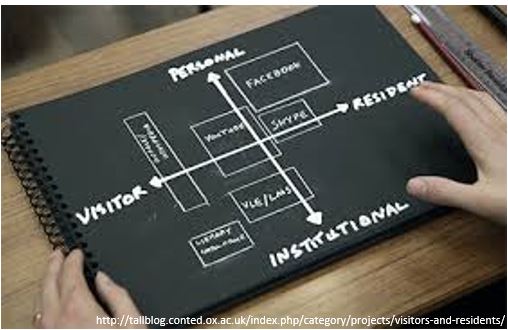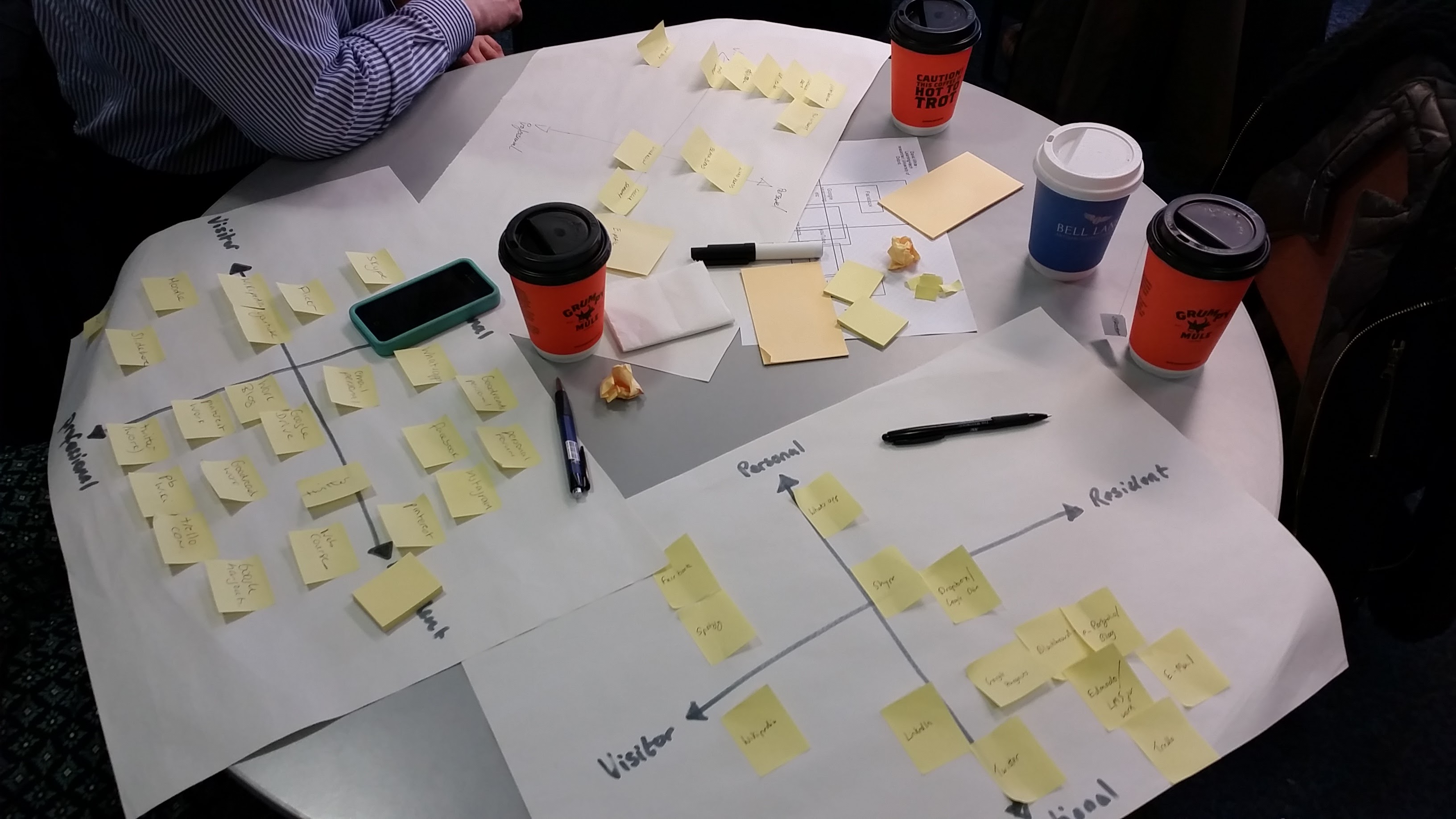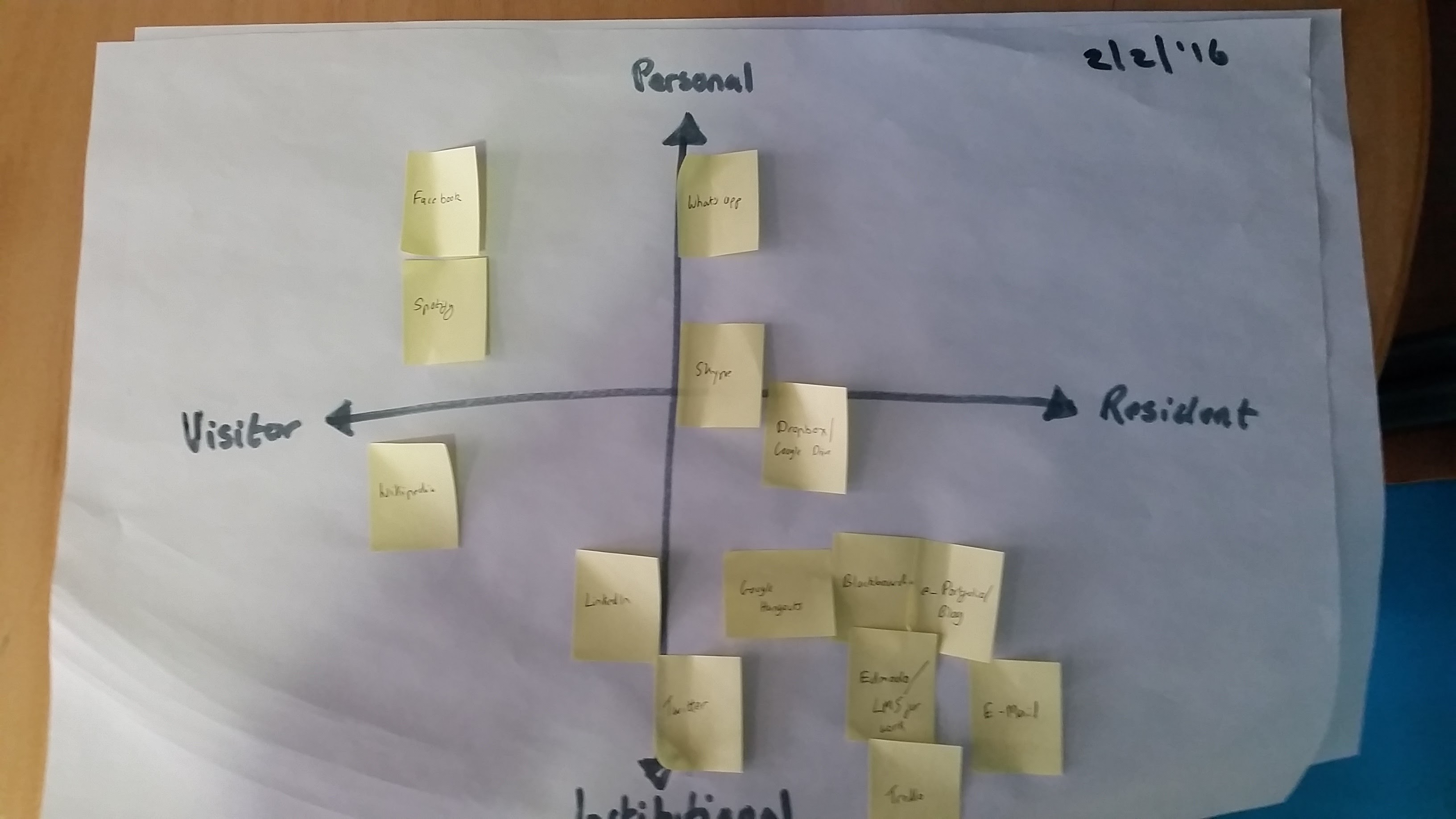The following is a reflection on Week 2 of the Trends in eLearning module using Gibbs Reflective Cycle.
Description
As today was a flipped classroom approach we discussed the video we were asked to watch – David White on his framework Visitors and Residents.
His framework refutes Marc Prensky’s Digital Immigrants and Digital Natives indicating that age is not a predominant factor for engaging with technology on the web. His alternative framework focuses on engagement and how we move between Visitor and Resident in either a personal or institutional capacity. Visitor represents the user who uses the web as a tool for specific tasks with no digital imprint. Conversely, the Resident engages at a higher level with interaction and a lasting imprint. Furthermore, he states that this is a continuum so users can move along the axis as illustrated below.
We also discussed Twitter and Muireann, our lecturer, was very passionate about the uses of Twitter in Education.
Feelings
As an educator I am aware of the negative impact that social media has on education. However, I can also see the benefits on how it can enhance the learning and create an innovative and collaborate environment for our students both in and out of the classroom. I am interested in delving more into this but feel that observing it with a critical view is also essential. Educating ourselves and our students on the best way to use it in a positive way in the classroom is instrumental. I’m also looking forward to the practical sessions we will be having in class next week.
Evaluation
Some good group discussions evolved in class today and Muireann was very passionate about the benefits of Twitter in education. We were asked to complete the Visitors and Residents map to ascertain how we engage on the web. Figure 1 depicts the group work and Figure 2 clearly demonstrates that my presence is Resident, Institutional.
I am not surprised as I always considered myself more of an observer than a contributor. It was interesting to see how varied the results were in my group and on reflection, implies how varied our students probably are in their use.
Analysis
While I was familiar with Marc Prensky the Visitors and Residents framework from David White was unknown to me. On reflection, I am trying to associate this framework in terms of education and training. While I understand it is a continuum questions that arose for me were ‘As educators how can we use this effectively in the classroom?’ ‘Does it mean that Resident learners are going to be the most engaging with technology?’ ‘Can learners who are predominately Visitor, Personal change easily to the Resident, Institutional?’ ‘Is it another framework that identifies different styles but in a social networking context?’ While White has an interesting point in relation to age, in my own experience in adult education, I have found many of the more mature adults to be more fearful of technology. This can be viewed as an advantage or a disadvantage. Furthermore, I agree with Prensky (2001, p2.) in that ‘today’s students are no longer the people our educational system was designed to teach’.
Conclusion
How we engage with the web is a very relevant topic in relation to the eLearning. The continuum of Visitors and Residents by David White is a more in-depth analysis on how we engage at an institutional and/or Personal level. Furthermore, this has been seen as a replacement for Marc Prensky’s controversial Digital Natives and Digital Immigrants. From the exercise carried out in class it was evident that each of us engage in different ways and this is important to consider when we think of our own students.
Action Plan
My plan this week is to further my reading in my annotated bibliography and to get started on my presentation. The comparisons between these two frameworks has also instilled an interest in me to compare both of their works. Moreover, I am interested to read up to date readings from Prensky to see if his views have altered in any way.
References:
Prensky, M. (2001) ‘Digital Natives, Digital Immigrants Part 1’, On the Horizon, 9(5), pp.1-6.


